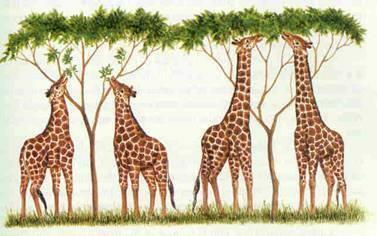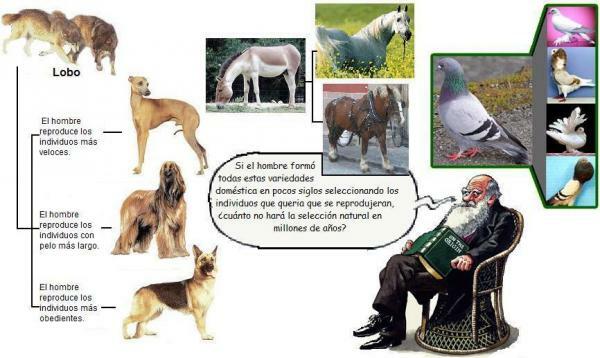The origin of species

Image: Taringa
One of the most important books for understanding the history of evolution was written in the mid-nineteenth century by Charles Darwin. This author spent much of his life studying various species and his behavior, the voyage of the Beagle being the one that would provide much of his theory. In this lesson from a TEACHER we bring you a short summary of The Origin of Species and we will summarize the most important parts of the theory of evolution that we will face with other evolutionary theories that Darwin attacked in various writings.
The origin of species It was published on November 24, 1859 by Charles Darwin. For this, the British author had to carry out a series of studies from the year 1831, at which time of him sailed on the Beagle as a naturalist and geologist.
This expedition would travel a large part of South America to take a series of annotations on geology, this was used by our author to study biodiversity that were in the places he was visiting. In this way he set about making a series of annotations, which he sent by mail to his family in Great Britain.
Thus he dedicated himself to studying the various species that were in these places and the differences that existed between the same in different places, this fact was what led him to study on the evolution of species and on its adaptation to the environment.
Within his work, one of the most well-known sections is the studies carried out on the Galapagos Islands in which he was able to make a detailed study of the different species that there were, being able to compare them with those of the neighboring islands.

Image: No gods
Continuing with our short summary on The Origin of Species We have to stop at the most important points that Darwin will deal with throughout the work, these being:
Origin of variations
Within this point, Darwin points to a series of factors that could influence genetic variations within the various populations, the most important being:
- Life conditions: they are not explicable through the genetic transfer from generation to generation, it is more an adaptation to hostile environments or specific what makes populations change their own behavior elements to better adapt to their environment.
- Use and disuse: within Darwin's theory and, although he opposed Lamarck, it is indisputable that, within the theory of the origin of species, it was accepted the use or disuse of organs, that is, depending on the use that is given to an organ we will find an increase in its possibilities or a decrease.
- Correlative variation: this is purely of genetic origin, that is, at this point, Darwin, talks about the different variables that can occur in the embryo throughout gestation.
The possibility of new species appearing
Within this point we stop to explain how Darwin tells us about the different variants that occur over time, which can lead to the creation of a new species.
This is observed, for example, in the species domestic animals that man uses today, since these species come from wild species that exist today and of which, Through a series of training techniques, they were forming a new, more docile species that could be used by the humans.
Thus at this point we will talk about the evolution of man that was changing a series of habits, which produced the appearance of new species.
Natural selection
Undoubtedly the most important point in the work and for which the theory is best known is natural selection. In this part the author tells us about the survival of the strongest specimenIt is this that manages to adapt better to the environment and therefore the one that manages to reproduce more easily, in that way. The weakest specimen fails to reproduce and thus does not pass on its genes to the next generation.

Image: No gods
Within our short summary on The Origin of Species we have to place ourselves at the most important point of this, that is why we bring you a summary of Darwin's theory, in which below we will point out the most important points:
- Each species is fertile in its own right for this reason they can reproduce making their population grow each time.
- Although we find a series of fluctuations over time, the size of the populations does not usually change over time.
- It is a fact that food resources are limited although we must also recognize that everything is stabilizing in the time frame.
- The fight for survival is indispensable. Within the species, the strongest survives or the one that best adapts. Weaker individuals are less likely to reproduce, making it impossible for them to pass their genes on to the next generation, so each new generation is stronger than the previous.
- Within the same population we will find a series of differences between individuals.
- Much of the variation that we will find between different generations comes from inheritance from parents.
- In order to see changes in a population, one must wait a long time, Well, it is not a thing from one generation to another.
In this other lesson from a TEACHER we discover a summary of the evolution of the species.



